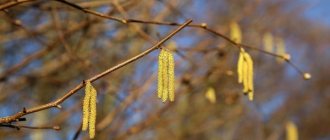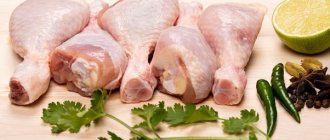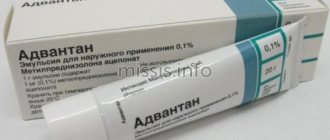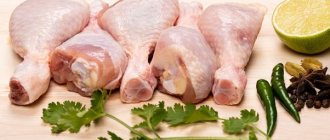The expression “skin like a baby’s” implies unusually delicate, soft, silky skin without any defects. However, more and more often mothers, together with pediatricians, allergists, and dermatologists, are faced with skin problems in their children. Is it possible to solve skin problems with a tendency to atopy using special cosmetics? Let’s look at it below.
Yes, indeed, the skin of children in the first years of life is particularly tender and at the same time insufficiently mature, and therefore vulnerable and prone to irritation.
The anatomical and physiological characteristics of children's skin largely determine the composition and use of care products.
The main skin features of young children are listed below:
- the looseness of the epidermis in combination with a thin stratum corneum leads to a tendency to irritation upon contact with physical and chemical irritants
- fragile connection between the epidermis and dermis
– low moisture content and imperfect blood supply
Below we will talk about skin care products for children prone to atopy.
For many years, Atopic dermatitis in children has been considered the number one problem among skin diseases. This is a chronic allergic inflammatory skin disease, accompanied by itching, rashes of varying morphology and severity and requiring an integrated approach in treatment, which includes the mandatory use of drugs for local use - topical glucocorticosteroids, calcineurin inhibitors, agents with antibacterial and antifungal properties, necessary during exacerbation of the inflammatory process, as well as skin care products during periods of remission of the disease.
In addition to the problem of atopy-prone skin, diaper dermatitis occurs in children, which occurs from exposure of the groin and buttocks to the friction of wet diapers. diapers, detergents, as well as low-quality or incorrectly selected care products. There is also the problem of chapping and sunburn. Thus, in each case, it is necessary to correctly select and use medicinal cosmetics to care for problem skin.
Currently, along with basic anti-inflammatory local therapy for atopic dermatitis, the standard of treatment includes moisturizing and emollient medicinal cosmetics. Until relatively recently, children’s skin care products were not known in Russia, especially in such variety as they are now. Previously, they used sterilized vegetable oil, powder, and simple baby cream.
There are a number of requirements for children's cosmetics
— it is permissible to use only high-quality raw materials
— all ingredients must be approved for use in infants and young children
— cosmetic products must pass safety tests and be certified
— the packaging of the products must indicate the manufacturers of the products, as well as all ingredients, including emulsifiers, flavors, and preservatives.
Simplified classification of essential skin care products
They can be conditionally divided into four main categories
- baby lotion
- baby cream
- baby oil
- protective cream
We will consider products for bathing and sun protection separately.
Lotion. This is a water-alcohol solution for hygienic skin care. The difference between children's lotions is the absence of alcohol in their composition. Their main purpose is to cleanse and moisturize the skin when it is difficult to clean it from dirt with water and conventional detergents. The lotion is usually used in the morning as a cleanser; it does not leave a greasy film on the skin.
Cream. Basic skin care product. The base of the cream is an emulsion consisting of a water and an oil part. Baby cream has a moisturizing and anti-inflammatory effect. Can be applied from one to several times a day to almost the entire surface of the skin.
Oil. Baby oil forms a protective film that protects against dryness and moisture, and can eliminate incipient irritation. In addition to the softening effect, it has a warming effect. There is a special oil that is added to the bathtub for bathing. In addition, the oil is used for children's massage.
Barrier cream. Its purpose is to treat diaper dermatitis.
Baby powder (talc) is an outdated product and is now used much less frequently. Pediatricians are concerned about the possibility of small particles of powder getting into the baby's respiratory tract.
During the remission stage of AD, skin functions are not completely restored, traces of the inflammatory process remain, and an incomplete water-lipid mantle is formed in the stratum corneum. The consequence is transcutaneous loss of water, which contributes to greater penetration of allergens. The skin is dry and sensitive to external factors.
Let us consider in more detail the types of medicinal cosmetics, which currently cannot be avoided in the presence of manifestations of atopic dermatitis, both in the stage of remission of the disease and during an exacerbation.
Their main action is aimed at restoring the natural hydrolipid film, cleansing and moisturizing the skin. All modern medicinal cosmetics do not contain alkali, fragrances, or a minimum of preservatives. The products are suitable for use from birth, as well as by adult patients. It is important to remember that the duration of action of the products in question is no more than 6 hours, so applications should be frequent, and every 3-4 weeks a change of nourishing and moisturizing agents is necessary to prevent the phenomena of tachyphylaxis (addiction to the drug and, as a result, its ineffectiveness ). When applying to children's skin, it is advisable to use the “distal phalanx rule”. A small amount of the planned care product is applied to the fingertip, then rubbed into a limited area of skin (for example, the wrist) to identify unwanted reactions.
Products based on thermal water - Aven, La Roche Posay, Uriage - are very effective. Each laboratory has a program for dry and atopic skin.
The series presented by the Bioderma laboratory is produced using zinc compounds, as well as active biological components of rhamnose, shea butter, kelp extract, and mineral oils. Cleansing - Atoderm Soap, Atoderm Mousse RR, Atoderm Shower Gel. Atoderm RO zinc cream is used in states of exacerbation and incomplete remission, and can be applied to areas of weeping. Balm Atoderm RR – prevention of exacerbation and prevention of recurrent dryness. Atoderm cream - point of application - constitutionally dry skin of adults, children and newborns.
The Avene Trixera series - nourishing is represented by a softening cream, a softening balm, a softening and cleansing gel and a bath. Avene Cold Cream - moisturizing, Avene lotion and Sicalfat cream have an anti-inflammatory effect.
The Locobase series of Astellas Pharma products contains essential lipids, which not only compensate for their deficiency in the stratum corneum of the epidermis, but can also penetrate into its deeper layers, providing a long-lasting effect. Locobase Ripea and Lipocrem - provide hydration and nutrition.
An important task of local therapy for AD is proper daily cleansing of the skin, followed by moisturizing, which reduces pathological changes in the epidermis, restores its functions, prevents exacerbations of the disease, increases the effectiveness of basic treatment and increases the duration of remission. It is important to note that the previous position on limiting bathing for children with AD is outdated. On the contrary, daily bathing (baths are better than showers) actively cleanses, moisturizes, provides better access to medications and improves the functions of the epidermis. To cleanse the skin, it is advisable to use short daily cool baths (33-35 degrees) with a soft detergent base, with a neutral pH and not containing alkali.
Currently, special oil and emulsion (Mustella and Emolium companies) have appeared among bathing products. Added to a baby bath, these products dissolve in water, soften it, and form a protective lipid layer on the skin; active substances penetrating into the skin help prevent water loss and protect against aggressive environmental influences.
Emolium series products. Moisturizer, bathing product.
The Mustella laboratory has long been known in Russia with series for moisturizing - Stelatopia and the treatment of atopic dermatitis - Stellatry. In addition, Mustella presents a foam product for removing seborrheic crusts from the scalp, as well as products with high UV protection to protect delicate skin from active sun rays both in summer and in winter when staying in the mountains.
The article was prepared by a team of pediatricians from the Tiger Cub Children's Medical Center
Antimicrobial and antiseptic agents
Fukaseptol and Fukortsin (solutions for external use, 10 and 25 ml in bottles) are red liquids of similar composition with a characteristic odor of aniline dye (fuchsine). Fukaseptol is manufactured using a new technology that allows the composition of the drug to be kept stable throughout the entire shelf life. The components of fucorcin may precipitate during long-term storage. Both drugs have an excellent antimicrobial and antifungal effect without interfering with healing. Used for application to scabs, scratching areas, and pustules. It is not recommended to lubricate fresh wounds, because... The alcohol contained in the composition causes a burning sensation. Large surfaces of skin should not be treated. After the solution has dried, pastes, ointments and creams can be applied to the skin.
An alcohol solution of methylene blue 1% has similar indications and application features. When applied to large areas of skin, the child’s urine turns blue.
Hydrogen peroxide 3% causes a tingling sensation when applied to the skin, but is always well tolerated. It is used to treat fresh wounds and scratches.
Furacilin solution 0.02%, made from powder and tablets of 0.2 g, belongs to another group of antiseptics - nitrofurans. Due to their weak effect and frequent cases of increased inflammation, nitrofurans in the treatment of allergic diseases have given way to stronger antiseptics - halogen-containing ones (chlorhexidine - 0.05% solution, 100 ml in a vial) and Miramistin (0.01% solution, 100 ml in a vial) .). Both solutions are aqueous, they can be used to treat fresh wounds and scratches without the risk of causing pain in the child, however, aqueous solutions take a long time to dry, and the skin treatment process, which is always unpleasant for children, is delayed.
Antibiotic ointments are used with caution for atopic dermatitis, as they are often allergenic. This group is dominated by domestic drugs, with the exception of ointments Bactroban (contains 2% mupirocin), Baneocin, Fucidin. Combined ointments Baneocin (contains bacitracin and neomycin), Levomekol ointment (contains chloramphenicol and methyluracil), Levosin ointment (contains chloramphenicol, methyluracil, sulfadimethoxin), in our experience, do not have any significant advantages. Unfortunately, the fatty base of domestic ointments with antibiotics does not contribute to the drying out and falling off of the crusts, rather softening them, so dermatologists prefer to use pastes with antibiotics (1% erythromycin, 2-5% lincomycin), prepared according to a prescription at the pharmacy. Fuzidin gel and Fucidin cream (contains 2% fusidic acid) have some advantage since there are still few resistant strains of microorganisms to the fusidic acid contained in the drug.
Silver sulfathiazole preparations are much better tolerated, although less commonly used - Argosulfan cream and ointment, containing 2% silver sulfathiazole in 40 g tubes, Dermazin cream, 1%, 50 g each, Sulfargin ointment in 50 g tubes. They should not be used Use for allergies to sulfonamide and sulfur-containing drugs.
Bismuth preparations (dermatol ointment 10%, xeroform ointment 10%) are inexpensive domestic preparations that have an excellent effect (antiseptic, drying and anti-inflammatory), however, they have a strong unpleasant odor and are rarely available in pharmacies.
Skin-cap preparations (70 and 100 ml aerosol, 50 g cream) also combine antiseptic and anti-inflammatory properties; high cost limits their widespread use.
Symptoms of dermatitis in children under one year old
Atopic inflammation of the skin in newborns manifests itself with characteristic signs, observing which, the pediatrician can easily make a preliminary diagnosis.
Symptoms of dermatitis in children under one year of age:
- The appearance of red spots on the skin of the face and body - mainly on the elbows, knees, cheeks, forehead. Neoplasms do not have clear boundaries, but characteristic scales appear on the surface of pathological foci.
- Increased body temperature.
- Irritability, tearfulness.
- Decreased appetite.
- Itching of the affected areas.
- Tissue swelling.
When the disease becomes chronic, symptoms may appear in outbreaks, with periods of exacerbation and remission. After the scales converge, the skin pattern changes and the tissues thicken. Since, in addition to redness, the newborn is worried about such a sign as increased dryness of the skin, it requires regular moisturizing.
Child skin care for atopic dermatitis, treatment, ointments
How to moisturize the skin with atopic dermatitis, and what drugs to eliminate the pathology, is determined by the pediatrician. For local treatment of foci of inflammation in the acute phase of their development, solutions, pastes, and aerosols are used that provide a drying effect. Fatty ointments and creams are used to heal affected tissues during the period of subacute and protracted progression of pathology.
Parents should keep in mind that atopic dermatitis in a newborn cannot be treated independently, without a doctor’s prescription, with hormonal ointments.
Pediatricians prescribe the following medications: 1. Zinc preparations (have a pronounced healing property). 2. Elidel (cream can be used to treat children over 3 years old). 3. Panthenol. 4. Skin Cap. 5. Emolium.
Before applying the medicinal cream, pathogenic lesions should be treated with antiseptic solutions - it is important not to neglect this action. To soften the affected areas of the skin, the use of sea buckthorn oil is prescribed. The use of hormonal ointments is justified only in cases where the disease has taken a severe form and is accompanied by pronounced symptoms. Pediatricians prescribe ointments that contain prednisolone.
To relieve itching and reduce redness, the use of antihistamines is indicated. These include Fenistil, Cetrin, Zyrtec. Additionally, pediatricians prescribe the use of enterosorbents: Enterosgel, Polysorb, Lactofiltrum. To normalize the intestinal microflora, it is necessary to take probiotics. The optimal period for their use is 1 month.
To monitor the effectiveness of the treatment, it is advisable to take a photo at home at the time of the start of therapy. Thanks to the images, it is convenient to subsequently monitor whether the signs of inflammation are decreasing.
Despite the positive properties of the listed medications, each of them is characterized by the likelihood of developing side effects. To minimize the risk of such, drugs should not be used without a doctor’s prescription.
In case of severe progression of dermatitis, hospitalization in a hospital department is recommended. In this case, specialists monitor the child’s well-being around the clock and adjust the course of therapy. In cases of uncomplicated dermatitis, the newborn is treated on an outpatient basis.








